Jump to the content
- {{#headlines}}
- {{title}} {{/headlines}}

Kontakt
Presse, Kommunikation und Marketing
Tel.: +49 228 833-144
Fax: +49 228 833-441
presse[at]avh.de
Mazhar N. Ali
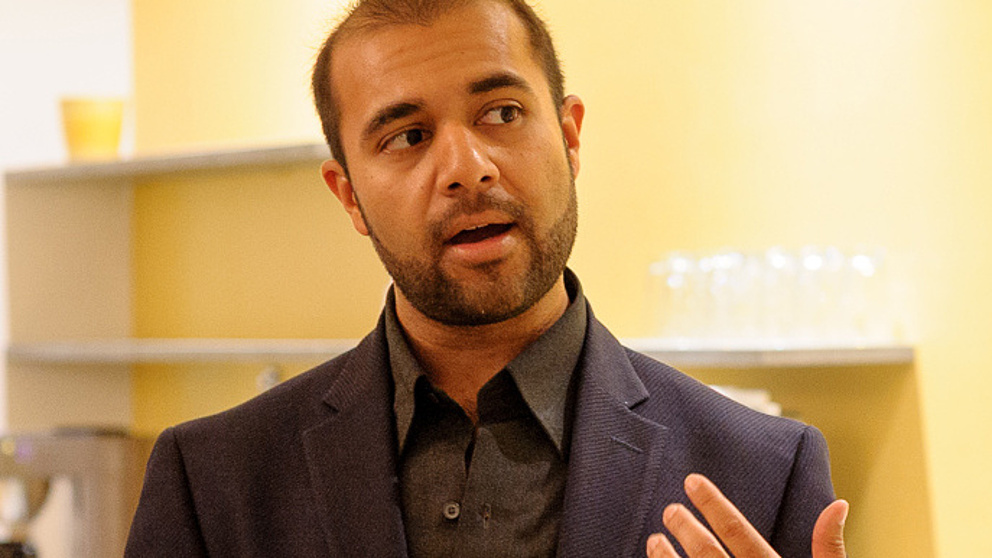

Dr Mazhar N. Ali
was born in the United States in 1986. He studied physics and chemistry at the University of California, Berkeley, from 2006 to 2009, concurrently pursuing internships in industry. With two Bachelor’s degrees under his belt he moved to Princeton University where he took a Master’s in chemistry in 2011 and a doctorate in chemistry and materials science in 2014. He subsequently became a postdoc at the IBM Almaden Research Center, near San José.
Solid State Physics
Massless particles facilitate novel electrical applications
They have no mass and they are very mobile – and thus ideal for the electronic transmission of information without friction loss. We are talking about Weyl fermions, which were only definitively discovered in 2015. These elementary particles can only exist inside certain solids such as so-called Dirac and Weyl semimetals. The particles are named after the German physicist Hermann Weyl who predicted their existence back in 1929. Contemporary physicist Mazhar Ali now wants to appropriate the materials’ unusual properties and to investigate the transport and spintronic applications of Dirac and Weyl semimetals in crystalline thin films as the basis for novel electronic components.
Host institute: Max Planck Institute of Microstructure Physics, Halle/Saale
Host: Professor Dr Stuart Parkin
David Egger
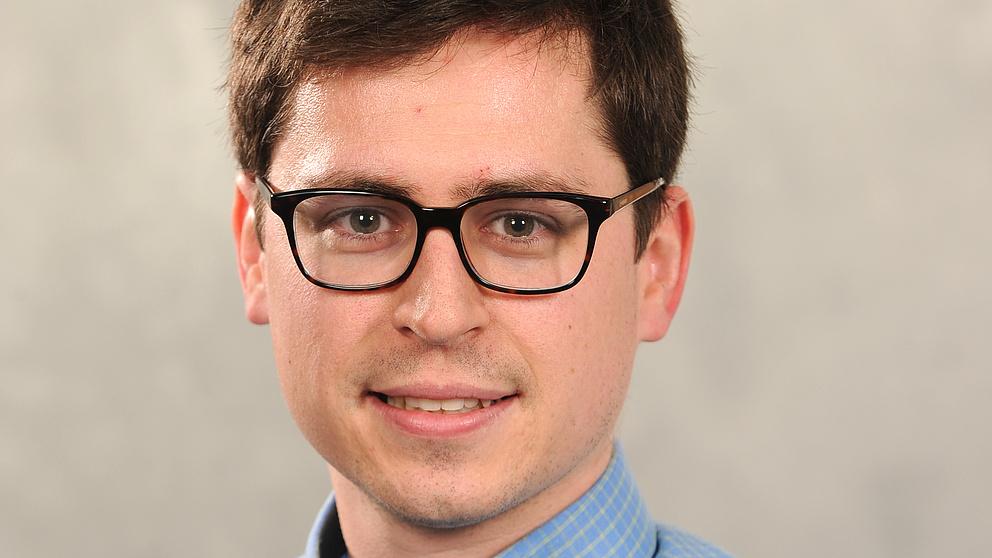

Dr David A. Egger
was born in Austria in 1987. He studied at Graz University of Technology, Austria, completing a doctorate in 2013. Alongside university, he also gathered significant experience in industry. With the aid of fellowships, Egger continued his research abroad as a visiting scientist whilst still studying and doing his doctorate. This took him to Germany, Israel, the United States and Belgium. In 2014, he became a postdoc at the Weizmann Institute of Science in Rehovot, Israel.
Theoretical solid state physics
This material makes green energies more efficient
The mineral perovskite was discovered in the Urals back in 1839. Now, it is unfolding its manifold potential, for example in medicine as part of bone implants, but above all as a semiconductor and material in particularly efficient solar cells, and even in batteries and fuel cells. The Austrian physicist David Egger investigates organic-inorganic perovskites which offer especially favourable properties for green energy applications as well as for use in spintronics. His goal is to optimise the material at the atomic level using supercomputers and with that increase its efficiency for using it in novel renewable energy technologies.
Host institute: Universität Regensburg, Institute of Theoretical Physics
Host: Professor Dr Ferdinand Evers
Michal P. Heller
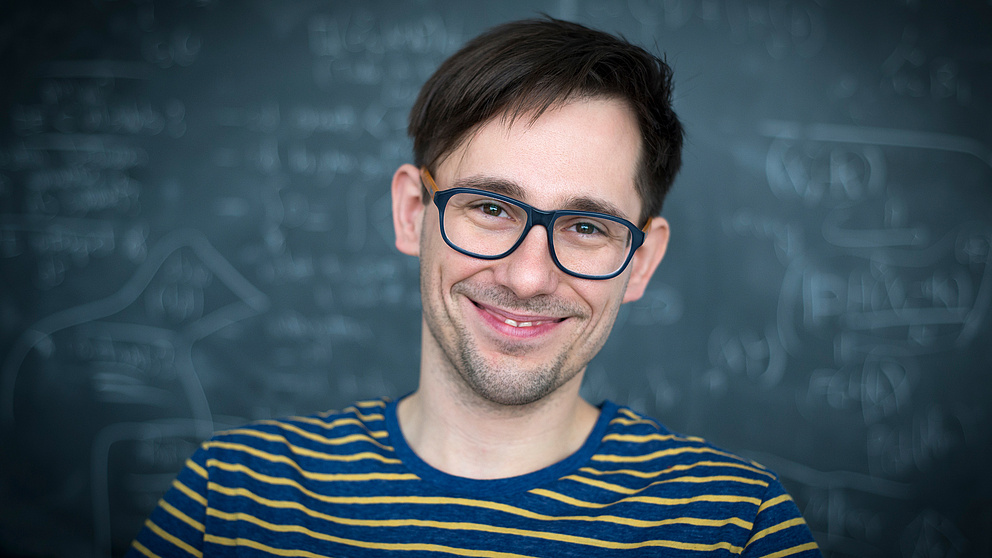

Dr Michal P. Heller
was born in Poland in 1984. He studied physics at the Jagiellonian University in Krakow, Poland, where he completed his doctorate in 2010. Numerous research visits during his training took him to the United Kingdom, France, Israel and to MIT in Cambridge, United States. Michal P. Heller became a postdoc at the University of Amsterdam and, from 2014, at the Perimeter Institute for Theoretical Physics in Waterloo, Canada.
Quantum Physics
What black holes tell us about our world
Is our three-dimensional world actually a hologram? After observing black holes, some physicists suspect it is. According to the holographic principle, everything we see, just as in Plato’s Allegory of the Cave, is merely an image or shadow of a more or less distant reality. An analogy with optical holography, in which the three-dimensional effect of the hologram is based on information that is stored in a flat medium, illustrates the phenomenon. The physicist Michal P. Heller applies this theory and mathematical tools like tensor networks to investigating matter and spacetime under extreme conditions. His aim is to acquire new knowledge on the emergence of spacetime and dual quantum field theory.
Host institute: Max Planck Institute for Gravitational Physics (Albert Einstein Institute), Potsdam-Golm
Host: Professor Dr Hermann Nicolai
Francesco Neri
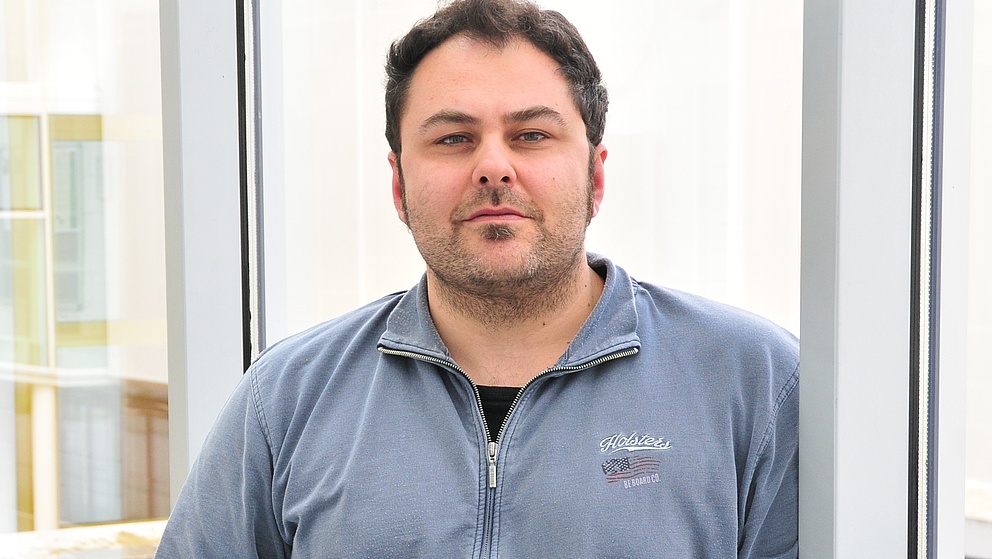

Dr Francesco Neri
was born in Italy in 1981. From 2000 to 2007, he studied molecular biology at the University of Siena, subsequently spending three years on a doctorate in biotechnology. He then worked at Radboud University Medical Centre in Nijmegen, Netherlands, for a year before returning to Italy in 2011. Francesco Neri continued his research at the Human Genetics Foundation in Turin, initially as a post-doc and, from 2015, as a research assistant.
Molecular Genetics
Why ageing cells develop cancer
What are the genetic mechanisms responsible for causing ageing cells to mutate and trigger diseases like cancer? The molecular geneticist Francesco Neri studies intestinal stem cells to try and find the answer. He focusses on the role of DNA methylation, a chemical mechanism with which the genome of a cell is modified. This kind of so-called epigenetic change means the cell can respond to impacts in its environment. Instead of useful modifications, however, particularly in ageing cells, the changes can also prove harmful. Neri has developed gene mapping techniques to investigate the causes, particularly at stem cell level, and to identify the genes that influence DNA methylation.
Host institute: Leibniz Institute on Aging, Fritz Lipmann Institute (FLI), Jena
Host: Professor Dr Karl Lenhard Rudolph
Faith H. A. Osier
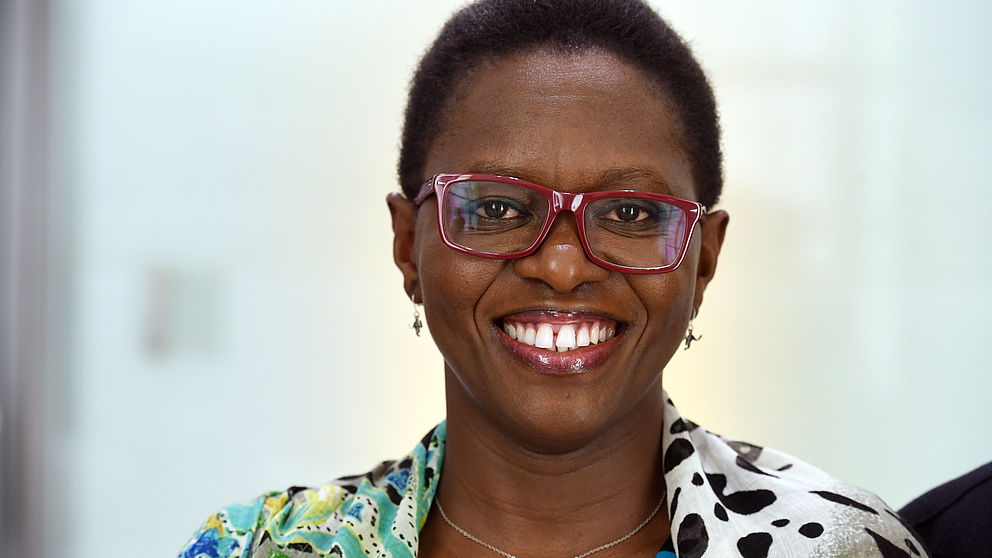

Dr Faith H. A. Osier
was born in Kenya in 1972 and studied medicine in Nairobi. She initially spent several years working in hospitals in Mombasa and Kilifi before moving to the United Kingdom in 2004. Here she took a Master’s at the University of Liverpool and completed a doctorate in biology with the Open University. She subsequently worked as a postdoc and paediatrician in Oxford and Kilifi where she has been a Clinical Research Fellow since 2010. From 2011 to 2013, Faith Osier was also a Visiting Research Fellow at the Burnet Institute for Medical Research in Melbourne, Australia.
Medical Microbiology
Malaria immunity
The battle against malaria has been fought for a long time and there is still no sign of a victory over the pathogen that is transmitted by mosquitos. The first vaccine that was introduced in 2015 is not proving as effective as hoped. There are, however, people who develop natural immunity to the disease. Is this the key to effective prevention and therapy? The Kenyan malaria researcher Faith Osier is conducting a large-scale study with subjects in seven African countries in order to gain a better understanding of the mechanisms of natural immunity. Her goal is to find a vaccine that is not based on a single antigen, to which the fitting antibodies can attach themselves, but on several at once. This would make it easier for the immune system to fight the pathogen during the various stages of its development.
Host institute: Heidelberg University Hospital, Department of Infectiology
Host: Professor Dr Michael Lanzer
William Shepherd
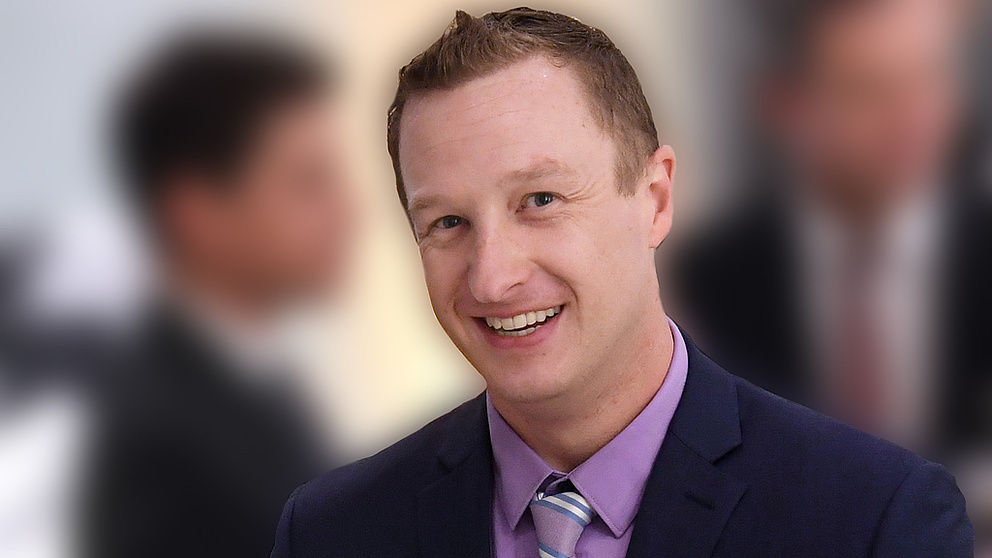

Dr William Shepherd
was born in the United States in 1984. He studied physics and mathematics at Northwestern University in Evanston, USA, taking a Master’s in physics and astronomy in 2009. He then moved to the University of California, Irvine, where he completed his doctorate in 2011 and spent six months teaching at different colleges. William Shepherd became a postdoc at the University of California, Santa Cruz, in 2012 before moving to the Niels Bohr International Academy at the University of Copenhagen, Denmark, in 2015.
Elementary Particle Physics
Tracking down dark matter
Dark Matter is one of the universe’s most closely-kept secrets. Experiments in the lab cannot prove its existence, and detectors fail to respond. But it makes its presence felt indirectly, for example by accelerating the expansion of the universe in the last five billion years. Researchers estimate that there is more than five times more Dark Matter out there than we are aware of. At the Large Hadron Collider, the particle accelerator at CERN, near Geneva, experiments are underway to discover new particles and finally track down Dark Matter. Particle physicist William Shepherd develops tools to analyse the huge volumes of data generated and decode the connections. He also develops theoretical models which make it possible to combine the results of the most diverse experimental methods and sources and to derive experimental set-ups.
Host institute: Mainz University, Institute of Physics
Host: Professor Dr Matthias Neubert
Safa Shoai
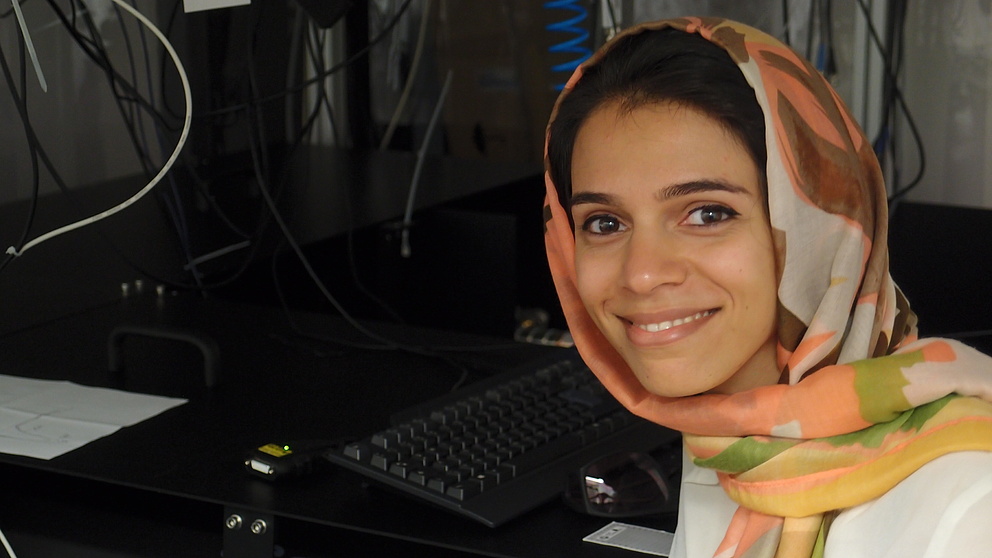

Dr Safa Shoai
was born in Iran in 1984. From 2002 to 2006, she studied physics at the University of Manchester, United Kingdom, subsequently moving to Imperial College London where she took her doctorate in physical chemistry in 2010. She continued to conduct research there and at the National Physical Laboratory until 2014. Since then, she has been a Postdoctoral Research Fellow at the University of Queensland in Australia.
Organic Photovoltaics
Bye-bye silicon? The solar cells of the future could be organic
Could organic solar cells be a more resource-friendly and simply better alternative to conventional silicon solar cells – and actually replace them? At present, they are only half as efficient as conventional solar cells, which is not good enough. The physicist Safa Shoai conducts fundamental research into optimising organic solar cells and making them cheaper to produce. Organic semiconductors, which can be used not just in solar cells but also in flexible displays and biocompatible electronics, are the key to such developments. To this end, Shoai investigates the morphology of the photoactive blend layer of organic solar cells which is usually composed of a mixture (blend) of two materials, known as the donator and the acceptor phase. Safa Shoai wants to discover whether the individual organic semiconductors are crystalline or amorphous and how closely the two reactants, donor and acceptor, are intermixed.
Host institute: University of Potsdam, Institute of Physics and Astronomy
Host: Professor Dr Dieter Neher
